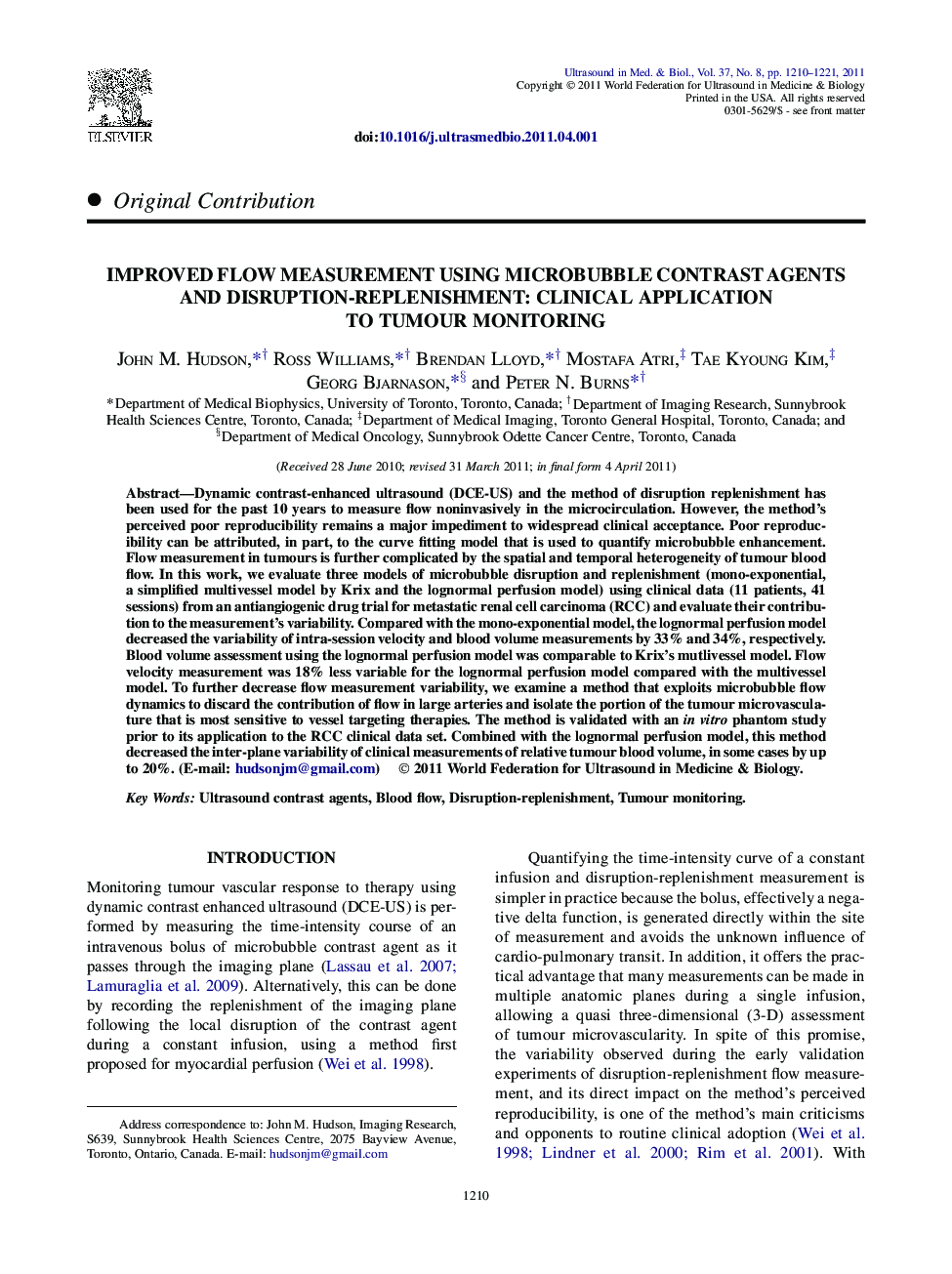| Article ID | Journal | Published Year | Pages | File Type |
|---|---|---|---|---|
| 1761589 | Ultrasound in Medicine & Biology | 2011 | 12 Pages |
Abstract
Dynamic contrast-enhanced ultrasound (DCE-US) and the method of disruption replenishment has been used for the past 10 years to measure flow noninvasively in the microcirculation. However, the method's perceived poor reproducibility remains a major impediment to widespread clinical acceptance. Poor reproducibility can be attributed, in part, to the curve fitting model that is used to quantify microbubble enhancement. Flow measurement in tumours is further complicated by the spatial and temporal heterogeneity of tumour blood flow. In this work, we evaluate three models of microbubble disruption and replenishment (mono-exponential, a simplified multivessel model by Krix and the lognormal perfusion model) using clinical data (11 patients, 41 sessions) from an antiangiogenic drug trial for metastatic renal cell carcinoma (RCC) and evaluate their contribution to the measurement's variability. Compared with the mono-exponential model, the lognormal perfusion model decreased the variability of intra-session velocity and blood volume measurements by 33% and 34%, respectively. Blood volume assessment using the lognormal perfusion model was comparable to Krix's mutlivessel model. Flow velocity measurement was 18% less variable for the lognormal perfusion model compared with the multivessel model. To further decrease flow measurement variability, we examine a method that exploits microbubble flow dynamics to discard the contribution of flow in large arteries and isolate the portion of the tumour microvasculature that is most sensitive to vessel targeting therapies. The method is validated with an in vitro phantom study prior to its application to the RCC clinical data set. Combined with the lognormal perfusion model, this method decreased the inter-plane variability of clinical measurements of relative tumour blood volume, in some cases by up to 20%.
Keywords
Related Topics
Physical Sciences and Engineering
Physics and Astronomy
Acoustics and Ultrasonics
Authors
John M. Hudson, Ross Williams, Brendan Lloyd, Mostafa Atri, Tae Kyoung Kim, Georg Bjarnason, Peter N. Burns,
